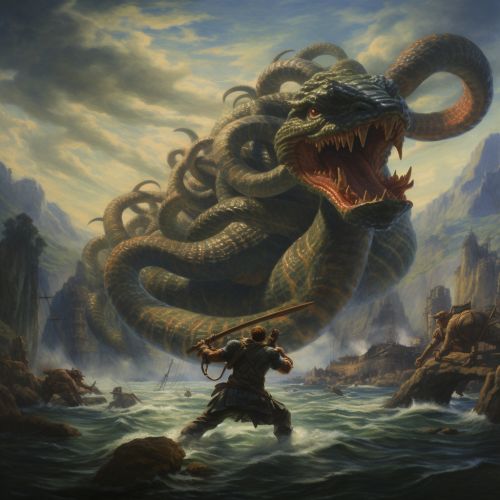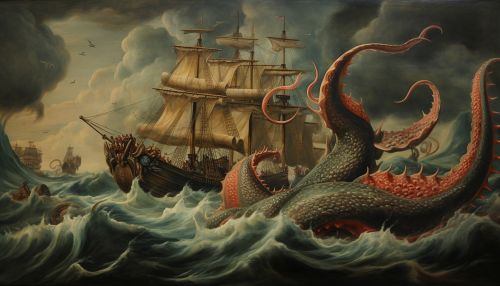Lernaean Hydra
Introduction
The Lernaean Hydra or Hydra of Lerna, is a creature from Greek mythology that was a gigantic, many-headed, water serpent-like monster. The Hydra is known for its regenerative ability, where if one of its heads was cut off, two more would grow back in its place.
Origin
The Lernaean Hydra is believed to have been the offspring of Typhon and Echidna, two monstrous creatures from Greek mythology. Typhon was known as the deadliest monster in Greek mythology, and Echidna was half woman, half snake. The Hydra was raised by the goddess Hera, who was known for her vengeful nature against Zeus' illegitimate offspring and enemies.
Description
The Lernaean Hydra was described as a serpentine creature with many heads. The exact number of heads varies according to different sources, but it is often depicted with nine heads. The middle head was said to be immortal, making the creature extremely difficult to defeat. The Hydra's breath and blood were reportedly extremely poisonous, and even its tracks were deadly.
Mythology
The Lernaean Hydra is most well-known from the myth of Heracles' Twelve Labours. It was the second labour that Heracles was ordered to perform. Heracles was sent to slay the Hydra, which had been terrorizing the region of Lerna.


Battle with Heracles
In the battle with the Hydra, Heracles quickly discovered that he could not defeat the monster by merely decapitating its heads as two would grow back in the place of each one he severed. With the help of his nephew Iolaus, Heracles came up with a plan to cauterize each neck with a burning torch as soon as he cut off each head, thus preventing any new ones from growing back.
Significance in Greek Culture
The Lernaean Hydra has been depicted in various forms of Greek art, often in the context of Heracles' battle with the creature. The Hydra also appears on ancient Greek coins and was a common motif on Greek pottery, particularly during the 6th and 5th centuries BC.
Modern Interpretations
In modern times, the Lernaean Hydra has come to symbolize a complex or multifaceted problem that cannot be overcome by simple means. This is due to the Hydra's regenerative ability, where cutting off one head only results in more heads growing back.
